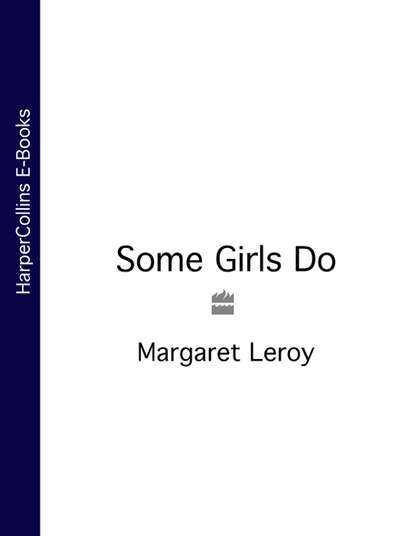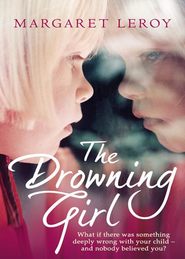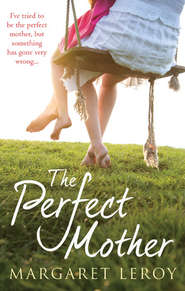По всем вопросам обращайтесь на: info@litportal.ru
(©) 2003-2024.
✖
Some Girls Do
Автор
Год написания книги
2018
Настройки чтения
Размер шрифта
Высота строк
Поля
In the past few years, US ‘close relationships researchers’ have looked at our courtship scripts – the behaviour we expect of ourselves and others when we go on a date. The results of their studies confirm that tradition still shapes our behaviour right at the start of our sexual relationships.
Psychologists Suzanna Rose and Irene Friez asked men and women to list the things they’d expect to do as they prepared for a date with someone new, and through the evening.
(#litres_trial_promo) They found that men and women largely agreed on the scripts. On a first date a woman expects to: tell her friends and family, check her appearance, wait for the man, welcome him to her home and introduce her parents or room-mates, keep the conversation going and control the rate of sexual intimacy. A man expects to: ask the woman for a date, decide what to do, prepare his car and flat, check his money, go to the woman’s house, meet her parents or room-mates, open the car door, pay, initiate sexual contact, take her home, and tell her he’ll be in touch. Here, men are making the arrangements and taking the sexual initiatives, while women set the scene and have a right of veto – they worry about what to wear and what to say, and they tell him when to stop. In their commentary, Rose and Friez acknowledge that ‘many young women today pay date expenses, and a majority of young men report having been asked for a date by a woman’. But the more dating experience the participants had, the more important they felt it was to stick to the time-honoured roles.
Other researchers have found the same. According to psychologist Susan Sprecher, men are still much more likely than women to take direct steps – to ask the other out, plan what to do on the first date, pay, and initiate the second date.
(#litres_trial_promo) Susan Green and Philip Sandos found that both men and women feel it’s more acceptable for the man to take the initiative – whether he’s simply starting a conversation or asking a person out.
(#litres_trial_promo)
Less academic writers reiterate the theme. In her book Hot and Bothered, a ‘guide to sexual etiquette in the 1990s’, based on hundreds of interviews with men and women in Canada, Wendy Dennis says she’s found that women still aren’t taking the lead at the start of relationships. ‘Most women realize that many men still find the notion of a sexually assertive woman distasteful,’ she writes.
(#litres_trial_promo)
US writer and researcher Warren Farrell runs mixed workshops on gender issues. In his book, Why Men Are The Way They Are, he describes how he asks people to simulate meeting at a party. He says, ‘That’s how I discovered how rare it is for a woman ever to take the hand of a man who had never before taken her hand, or to kiss a man for the very first time, or to take any of the hundred and fifty initiatives between eye contact and sexual contact I found are typically expected of a man if the relationship is ever to be sexual.’
(#litres_trial_promo)
COURTSHIP LIBERALS: Passive – moi?
Men still make the arrangements. Women still wait to be asked. Yet many of us would like things to be different. There were hints of this hunger for change in the way both men and women described their dating behaviour to me. Almost invariably, they played down the gender differences.
When women talk about the moves they do make, they strive to show that they have some control over what happens. A woman will emphasize the potency of her glances, gestures, smiles. She’ll claim her signals are crystal clear. She’ll describe how she’ll cross a crowded room to talk to an appealing stranger, and how she’ll touch the man before he touches her, or put her arm round him.
The behaviours that women present as examples of making the first move usually fall within the parameters of the traditional script. For instance, touching first – a light touch on the shoulder or arm – has tended to be the woman’s prerogative. Initiatives like this that women do take are often open to interpretation. She goes up to him and starts talking. Is it flirtation or friendship? She puts her arm round his shoulders. A sexual move – or a warm affectionate hug? These initiatives are indirect: it’s not obvious what they mean. And because they’re ambiguous, they’re a lot less risky than the traditional male initiatives – an invitation to dinner, a kiss on the lips. This distinction was clearly recognized by Rowena, who said, ‘If you open your eyes wide at someone, you can pretend it wasn’t really happening if it all goes wrong. But if you went and said, “Can you come to the cinema with me on Friday?” and he said no, you’d feel pathetic.’
Yet the fact that women highlight the moves that we do make shows how ready we are to move on. Women today are well aware of the rewards for sexual assertion. ‘Passive’ is a dirty word: no woman wants to be seen as passive in her sexual behaviour, and many of us would love to be more confident and innovative in our sex lives. I suspect that we put such stress on the active parts of our courtship behaviour because we yearn for more control at the start of our sexual relationships.
Men also tended to present themselves as thoroughly egalitarian. Men told me that yes, of course, it was fine for women to ask them out, it was a thoroughly good thing, they didn’t go in for this man-the-hunter act anyway. They said they were sure it was happening a lot, because it had happened to them – though, on probing, I usually found that they’d been approached only once or twice, while they’d approached large numbers of women themselves. They also stressed how tentative they were in their traditional male role and how difficult they found it: they told me how few risks they took, how shy they were, how they waited till they were sure.
Younger men in particular played down the amount of planning they did. Geoff, twenty-six, said, ‘I think planning spoils it. I take it as it comes, play it by ear according to the situation. With some girls you genuinely just want to have a coffee and a chat and see what happens … .’ He mused on this, then added, ‘Subconsciously I probably do plan what’s the best way to go about it.’
Our attitudes to courtship are Janus-faced. Like Geoff, we look to both the past and the future. People talk first about how things should be – women should initiate, men should welcome women’s initiatives, we should all be as clear as day in our sexual dealings, no-one should scheme. It’s only later in the conversation that they reveal, like Geoff, what they actually do – which may well be less open and egalitarian than they’d at first implied. It’s all very encouraging for those of us who’d welcome a new kind of courtship. In our heads we’ve invented a whole new world: we’re just not living there yet, because we’re not quite ready to risk it. In courtship the stakes are so high. And when we’re approaching someone we’d love to get into bed with, we do what seems safest – and for now that so often means looking back to the past and taking our lines from the familiar script.
COURTSHIP CONSERVATIVES: From the Stone Age
But I also talked to people who felt that the pattern simply couldn’t be changed, however much they might want it to be changed. These courtship conservatives were always women. To explain why men should always do the asking, they referred back to the ultimate authority – their mothers – or invoked the concept of the ‘natural’ and pointed to the sexual behaviour of their children’s pet hamsters.
Jessica was one of these sexual conservatives:
‘I’ve wanted to ask men out, but I wouldn’t have done, ever, ever. I’ve always used other ways to invite them out, to do with one’s behaviour, as I think most women do. You don’t use words, you play a game.
‘I don’t think men like to be asked, I really don’t. I think they do like to have a woman come and make sexual passes at them, I think that’s lovely for them. I think what you get then is the one-night stand – where he says, “Ooh, that was great fun, wasn’t it? Bye, maybe see you next year …” . But I was never into doing that because I was never that into sex, I was into long-term relationships. I think they like to play a game of chase, where it looks like they’re doing the chasing – and it may well be you’re doing the chasing but no-one’s going to admit to that.
‘It’s probably based on what my mother said, “Don’t chase them, they hate it …”, so there’s all that kind of feminine lore from the past which I think there are seeds of truth in. Of course, women should be able to ask men out – but I just can’t see it happening, the game is so set.
‘My brothers have had streams of girls whom they laughed at. One of them actually booked a flight on the same aeroplane to Canada – he got on the plane and there she was, booked a seat next to him – and as far as he was concerned she was just a one-night fling – and it’s been a joke ever since. So the horror of that sort of thing – realizing it was not a tactic that worked, and it was far better to pine by the telephone for a few days and then get over it than to make a fool of oneself – “hurling yourself at a man” as my mother would say.’
Jessica refers back to the past, to female lore, to the way things have always been. It’s because this is how the game has always been that she feels it can’t be changed.
Yet this belief that ‘the game is so set’ is worth examining. Because in fact Jessica is wrong. There are crucial elements in our present courtship patterns that don’t go back as far as we imagine. Conventions about who initiates have changed radically within living memory.
In her study of courtship in the US from 1900 to 1950, From Front Porch to Back Seat, Beth Bailey describes how before the First World War, in the calling system that preceded the dating system, it was women who took the initiative at the start of romantic relationships.
(#litres_trial_promo) The behaviour required of the genders at the beginning of a relationship was then quite different. Even though women had little power in the public world, they did have complete responsibility for making arrangements at the start of courtship. At first the young girl’s mother invited men to call. Later the young woman herself could invite round any unmarried man to whom she had been properly introduced. These initial encounters took place in a social milieu controlled by women. It all happened in the parlour, in the women’s sphere, and even the patterns of consumption were quintessentially feminine – little cakes and hot chocolate. This is the world of T.S. Eliot’s J. Alfred Prufrock – written in 1915 – whose life was measured out in coffee spoons in rooms full of the rustle of women’s skirts.
And in this world, male initiative at the start of sexual relationships was very differently viewed. In 1909 a worried young man wrote to an agony aunt of the time, the US Ladies Home Journal adviser, Mrs Kingsland. He asked, ‘May I call upon a young woman whom I greatly admire, although she had not given me the permission? Would she be flattered at my eagerness, even to the setting aside of conventions, or would she think me impertinent?’ A man making the first move? Absolutely not, said Mrs Kingsland: ‘I think that you would risk her just displeasure and frustrate your object of finding favour with her.’
(#litres_trial_promo)
But after the First World War, courtship changed. It moved out from the private female world into the public male-controlled sphere. Under the dating system, the couple went out – to a meal, to a dance, to the pictures – and the man took all the initiatives: he asked her out, planned the evening, bought the tickets, booked the table, paid the bill, opened the car door. And once the required behaviour had changed, people rapidly came to believe that the new convention was the way it had always been. In our thinking about sex, we have very short memories and no sense of history. A mere fifty years later, advice books were giving precisely opposite advice to that offered by Mrs Kingsland – and referring back to the palaeolithic as their authority. ‘Girls who try to usurp the right of boys to choose their own dates’ will ‘ruin a good dating career. Fair or not, it is the way of life. From the Stone Age, when men chased and captured their women, comes the yen of a boy to do the pursuing.’
(#litres_trial_promo)
COURTSHIP LIFE-CYCLES: Looking for love
For people today, the very word ‘courtship’ can be alienating. It seems to come from another era. Courtship is for Elizabeth Bennet and Mr Darcy, eyeing each other lecherously while doing the most decorous of dances. Yet surprisingly we have no other term for that sequence of behaviour through which we indicate our sexual interest in a more or less stereotyped way.
‘Courtship’ also implies quite a narrow range of relationships as the goal of the behaviour. As in Pride and Prejudice, we take the purpose of courtship to be the formation of the pair-bonds that lead to marriage. In this analysis, it’s the marriage that defines it as courtship in retrospect. This is the kind of courtship that’s examined in much US close relationships research. But in this book I’ll include every type of relationship – casual sex, adultery, passionate and troubled affairs lasting six and a half weeks – all the many and various kinds of sexual activity or connection which are preceded by some kind of courtship process, however truncated, elliptical or secret it may be.
Courtship isn’t only for the young, either. It’s obviously young people who are most involved in this process, and the US research on the subject is all about people aged between about eighteen and twenty-three for purely pragmatic reasons: psychology students on US campuses get extra credits for participating in experiments. But this is behaviour that we may engage in at any time in our lives after puberty. There are love affairs even in old people’s homes. In my interviewing for this book, the people I talked to ranged in age from the early teens to the mid-fifties.
Courtship doesn’t follow a similar pattern right through the life cycle. Our courtship behaviour, and the kinds of relationship we seek to achieve through that behaviour, vary with age. In particular, as we get older our sexual negotiations gradually move out of the public into the private domain. Eventually, for many of those people for whom courtship continues, it becomes one of the most secret parts of their lives. To get a clearer picture of courtship, let’s look at how our behaviour changes through the life-cycle.
The first bits of courtship behaviour are enacted in a very public arena. Chloe at thirteen says, ‘These ten- and eleven-year-olds will see Eve Taylor on the bus, and they’ll say, “Ooh isn’t she gorgeous, isn’t she hot” – and they don’t really mean it, they’re just doing it to show their mates they’re cool. I’ve heard these little ten-year-old boys say to their friends, “I got off with Eve Taylor last night!” I’ll think, oh yeah I’m sure you did. She’s fifteen, I don’t think so … Even your friend when it comes to a boy – well, you might think she’s your friend, but she isn’t really – if they thought someone was going to ask me out, they’d sort of sabotage it a bit and spread different messages and rumours.’
In a sense, young people at the start of adolescence are playing at courtship. Most of the time, it’s rather like ITV’s ‘Blind Date’ – the form without the content of sexual behaviour. There’s talk about who you fancy – even if you don’t. Passions are communicated via go-betweens, though the message may get distorted in the telling. Love letters are written and sent: some express real feelings, some are fake and may have a group authorship, and any of them may get read out on the school bus.
The public nature of this courting can cause distress. Young people of this age tell cautionary tales about the risks of using go-betweens. As Chloe points out, friends entrusted with messages may have their own jealous or malicious agendas. And in the tabloid culture of the school cloakroom, everyone knows how far you went: girls get given marks out of ten and a fourteen-year-old who admits to still being a virgin may be consigned to the ‘V-group’. Rumours are spread and reputations destroyed: and a girl who’s been out with too many boys will be cornered by girl bullies in the toilets and called a slag or a dog.
But the public nature of this behaviour also has a protective role. Friends are used as a source of courage: a boy who goes to visit a girl he likes may take his best mate too – rather like working-class adults in the eighteenth century, who often went ‘a-wooing’ together.
(#litres_trial_promo) And the social group protects by establishing the norms, however cruel its effect on an individual young person. For instance, though there may be sexual harassment – and boys’ early attempts to show interest in girls are often crude and intrusive – there will also be social support for coping with the harassment. Girls are by no means the voiceless and innocent victims of boys’ playful or bullying expressions of sexual interest that they are sometimes made out to be. Kieran’s approaches to Lydia mixed romantic offerings like letters saying how much he fancied her with more harassing approaches: he offered her a pepperami from his lunch – ‘I cut it off just for you’ – to which she responded with a well-rehearsed gagging routine, to the delight of her friends.
As people reach their mid- and late teens and early twenties, they move into the kind of courtship territory with which most of the existing research is concerned. Courtship is now a more private affair but the resulting relationships are highly public, and may be recognized with public ritual. Pairing-off may lead to a one-night stand or life-long marriage and parenting or anything in between.
Recently there have been some fascinating changes in courtship customs for this life stage – and there’s a ‘back to the future’ theme to several of these developments. Some of our new customs – cohabitation, the rave, and sharing a bed without intercourse – revert to older ways of doing things. We’re returning to courtship patterns that predate that era, lasting roughly from Queen Victoria’s accession in 1837 to the 1950s, which was the most sexually repressive period in recent English history – a period when the sanctions against pre-marital sex were particularly punitive, when the clitoris got forgotten, when the very essence of femininity was a denial of the woman’s sexuality.
Today’s custom of cohabitation, to be followed by marriage at the point at which the couple decide they want children, has analogies with the betrothal system that pre-dated the Victorian system of courtship. Betrothed couples lived together and were sexually intimate but the contract was not regarded as binding until they got married, with the proviso that the man would support the child if the woman got pregnant.
(#litres_trial_promo) Cohabitation, like betrothal, is a profoundly rational custom: both give the couple a trial period together before they take the irrevocable step of having children. Both institutions also allow women a lot of independence. The betrothed woman kept her name and single legal status, and today a cohabiting woman will probably have her own bank account and her own circle of friends – signs of separateness which she may give up on marriage.
The changing role of dancing in courtship also looks back to the way things used to be. Club culture restores to dancing its atavistic function. ‘When we go to clubs, it tends to be all the girls,’ Natalie told me, ‘and all we want to do is just dance and have a good time. We don’t talk to anyone else except the barman.’ For the past hundred years or so, dancing has had a narrowly sexual purpose as a form of regulated physical contact between men and women who otherwise were rarely permitted to touch. But today, as in the more distant past and in other cultures, dancing isn’t only a route to sexual pairing, it’s also an end in itself. It’s about a sense of oneness with the group which may or may not be enhanced by street drugs and is sometimes almost transcendent. ‘There was such an intense, communal feeling of happiness, it was overwhelming. Everyone facing each other, smiling, singing, hands in the air.’
(#litres_trial_promo)
The young couple who get into bed together but don’t have intercourse are also reverting to an older pattern. In sixteenth-and seventeenth-century England and Wales, bundling or night-visiting was commonly practised by courting couples: this is what those folksongs in which men come tapping at women’s windows are all about. The man would come to his sweetheart’s window after her parents had gone to sleep and she might choose to let him in and invite him into her bed. Historian John Gillis writes, ‘We know from accounts of bundling practice that a certain degree of fondling and kissing was permitted’, but couples must have taken care for the woman not to get pregnant while they were still unsure about each other.









